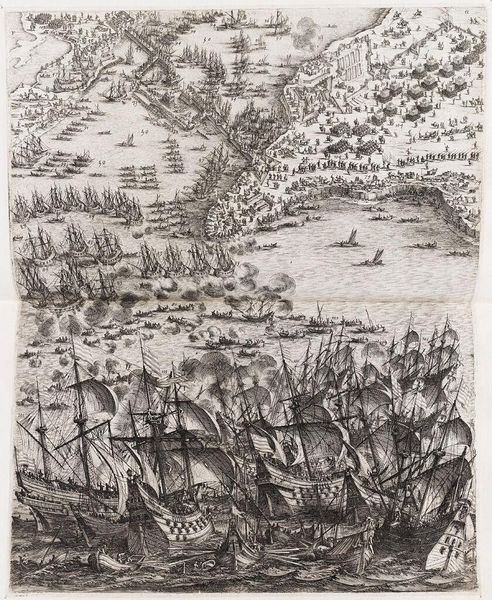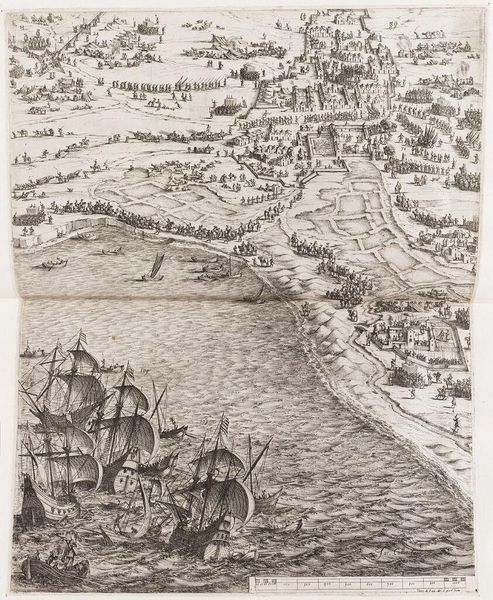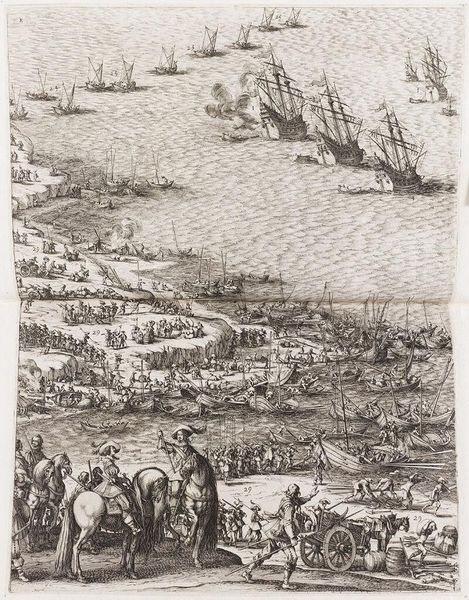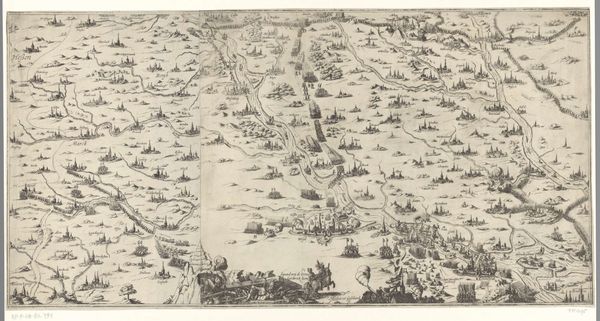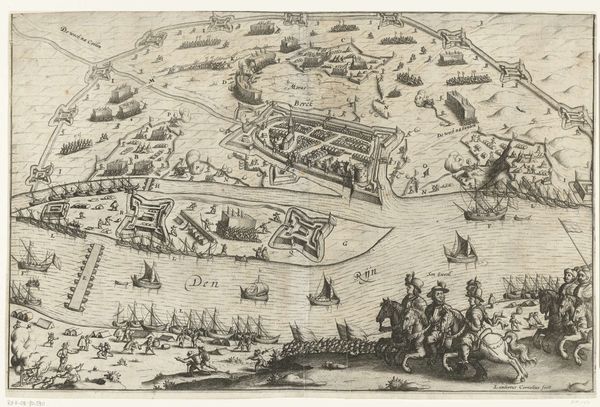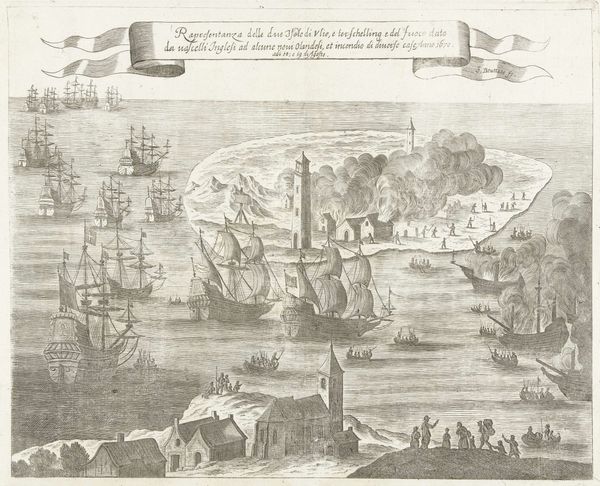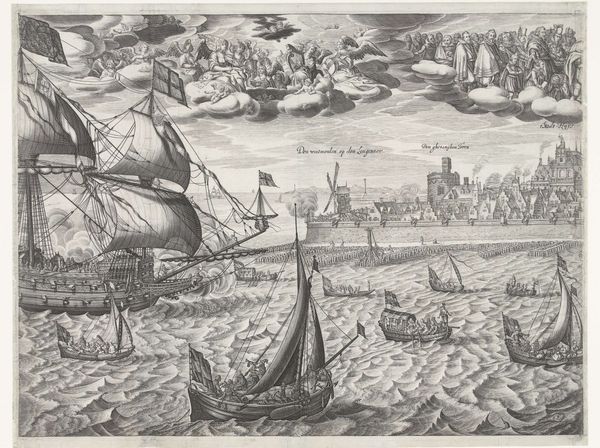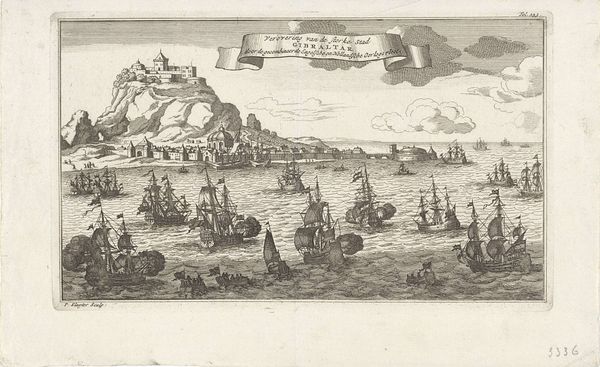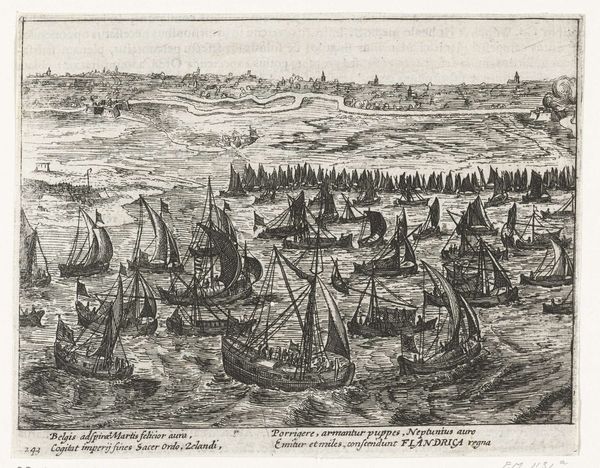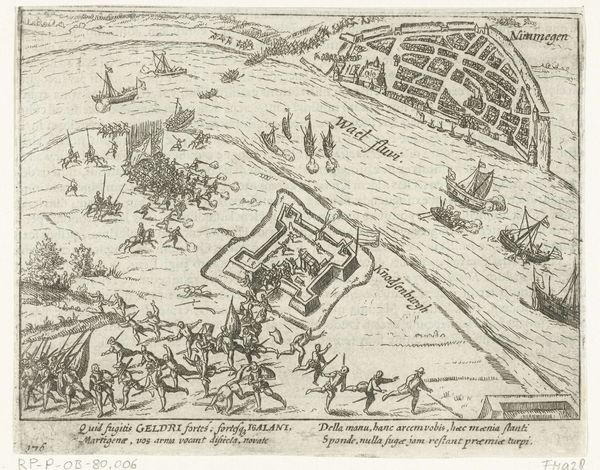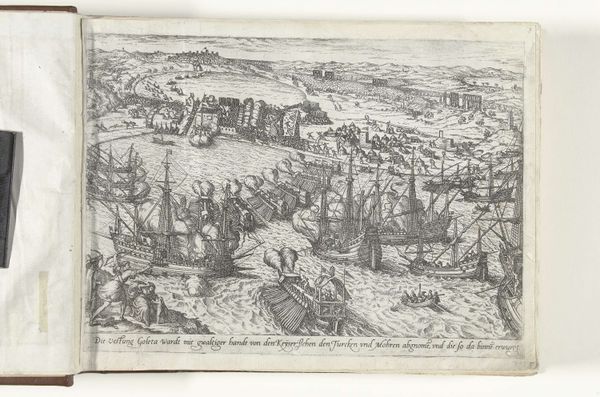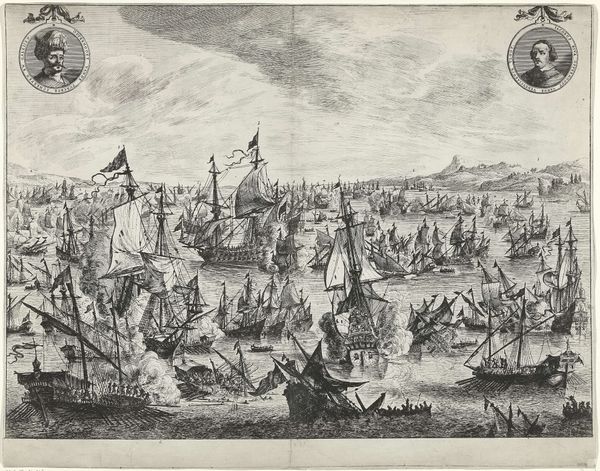
Copyright: CC0 1.0
Editor: This is Jacques Callot's "Siege of La Rochelle," an engraving. It depicts a conflict with so many figures, yet it feels distant. What's your take on its representation of power and resistance? Curator: It's crucial to see this work not merely as a record but as a narrative shaped by religious and political tensions. How does Callot's almost detached, aerial perspective affect your understanding of the human cost of the siege? Editor: I hadn't considered that. It does create a sense of removal from the suffering. Curator: Exactly. This distance implicates the viewer. We're invited to analyze the mechanisms of power at play, the way conflict is represented and consumed, and the silencing of marginalized voices within the historical narrative. Editor: So it's not just about what's shown, but who gets to tell the story? Curator: Precisely. And whose perspective shapes our understanding of such events even now. Thanks, this has given me a lot to think about. Editor: Me too!
Comments
No comments
Be the first to comment and join the conversation on the ultimate creative platform.
